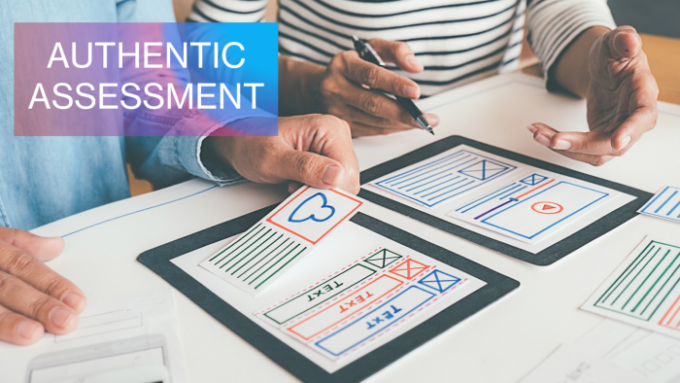In the realm of education, the concept of authentic assessment has gained considerable prominence. This transformative approach focuses on evaluating not just what students know but how effectively they can apply their knowledge and skills in real-world contexts.
While authentic assessment offers numerous benefits, it also comes with its unique set of challenges. In this article, we will delve into what is authentic assessment and explore its pros and cons, providing a comprehensive understanding of this educational methodology.
Understanding Authentic Assessment

At its core, authentic assessment involves evaluating students through activities that require them to apply their knowledge and skills to real-world scenarios. These assessments mirror the tasks and skills students will encounter in their future careers, bridging the gap between education and the workforce. The primary goal is to assess how well students can transfer what they’ve learned in the classroom to authentic, practical situations.
Pros of Authentic Assessment
Higher-Order Thinking Skills: Authentic assessments excel at evaluating higher-order thinking skills, such as critical thinking, problem-solving, communication, and collaboration. They go beyond rote memorization, encouraging students to engage in meaningful learning experiences. This approach fosters a deeper understanding of the subject matter.
Engaging Learning: Authentic assessments provide a more engaging way for students to learn. By incorporating feedback through self-assessment, peer review, and instructor evaluation, they enhance the learning process and promote active participation. Students become active contributors to their own education.
Real-World Relevance: These assessments are grounded in real-world scenarios, ensuring that students acquire skills that are directly applicable to their future careers. They provide evidence of a student’s ability to navigate authentic challenges. This real-world relevance enhances students’ motivation to learn and prepares them for practical success.
Academic Integrity: Authentic assessments safeguard academic integrity by focusing on skill demonstration and practical application. They provide tangible evidence that students are retaining and effectively applying what they’ve learned. This promotes a sense of accomplishment and mastery.
Cons of Authentic Assessment

Complex Grading: Grading authentic assessments can be more complex than traditional assessments. Instructors need to develop unique grading methods tailored to each assessment task. This complexity can be time-consuming. It may also introduce variability in grading.
Technological Requirements: Authentic assessments often rely on technology, such as video, to enable students to demonstrate their skills effectively. Ensuring access to the necessary technology and resources can be a logistical challenge. This may create disparities in students’ ability to complete assessments.
Subjectivity: The practical nature of authentic assessments can introduce subjectivity into the grading process. Instructors may need to establish clear evaluation criteria and standards to maintain fairness. The subjectivity can lead to variations in assessment outcomes.
Assessment Tools: Finding the right tools and platforms for authentic assessments can be a hurdle. These assessments often extend beyond traditional pencil-and-paper tests, requiring innovative tools for evaluation. Selecting and implementing these tools effectively can be a learning curve for educators.
Navigating Challenges with Innovation

As educators continue to embrace authentic assessment, it’s essential to address its inherent challenges innovatively. Grading complexities can be mitigated with the development of clear rubrics and the incorporation of technology. Leveraging video-based assessment platforms like GoReact allows educators to streamline the evaluation process, provide timely feedback, and assess student performances effectively.
Moreover, as technology evolves, new tools and techniques are emerging to support authentic assessment, making it increasingly accessible and efficient. By staying adaptable and embracing these innovations, educators can maximize the benefits of authentic assessment while minimizing its potential hurdles.
The Significance of Authentic Assessment
Despite its challenges, authentic assessment plays a crucial role in preparing students for career success. By evaluating higher-order thinking skills, fostering engaging learning experiences, and ensuring real-world relevance, it equips students with the skills they need to excel in the workforce. While grading may be more intricate and technology-dependent, the benefits of authentic assessment far outweigh the drawbacks.
Balancing the Scale

While authentic assessment offers an array of benefits, it’s important to strike a balance between various assessment methods. Integrating both traditional and authentic assessment strategies can provide a more comprehensive view of students’ abilities. Traditional assessments, such as multiple-choice exams, are efficient for evaluating foundational knowledge and recall.
They offer a snapshot of a student’s understanding at a specific point in time. When combined with authentic assessments, educators can gain a holistic perspective of a student’s competencies, covering not only knowledge but also practical application and critical thinking skills.
Embracing Authentic Assessment

Authentic assessment stands as a valuable approach that empowers students to become active participants in their learning journey. It prepares them for the complexities of the real world by fostering critical skills and practical knowledge. While it presents grading challenges and requires technological support, its advantages in promoting higher-order thinking, engagement, and real-world relevance cannot be overlooked.
Educators today are increasingly recognizing the merits of authentic assessment in shaping well-rounded, capable individuals ready to conquer the challenges of their future careers. By navigating its pros and cons thoughtfully, educators can harness the full potential of authentic assessment to empower their students.
To summarize, authentic assessment stands as a transformative educational approach that empowers students to apply their knowledge and skills in practical scenarios. It excels at evaluating critical thinking and problem-solving abilities while offering engaging learning experiences. As education continues to evolve, authentic assessment remains a beacon of meaningful learning, bridging the gap between academic knowledge and real-world application.
Authentic Assessment in the Future
In conclusion, authentic assessment stands as a beacon of educational progress, offering a pathway to more profound learning and better preparation for the challenges of the real world. While it presents challenges, its benefits far outweigh the drawbacks. Authentic assessment not only equips students with critical skills for life beyond the classroom but also provides educators with a more comprehensive view of their students’ capabilities.
As technology and innovative methodologies continue to enhance the authentic assessment landscape, its future is promising. By embracing this approach, educators empower their students to thrive in a world where practical skills and real-world application are paramount.










